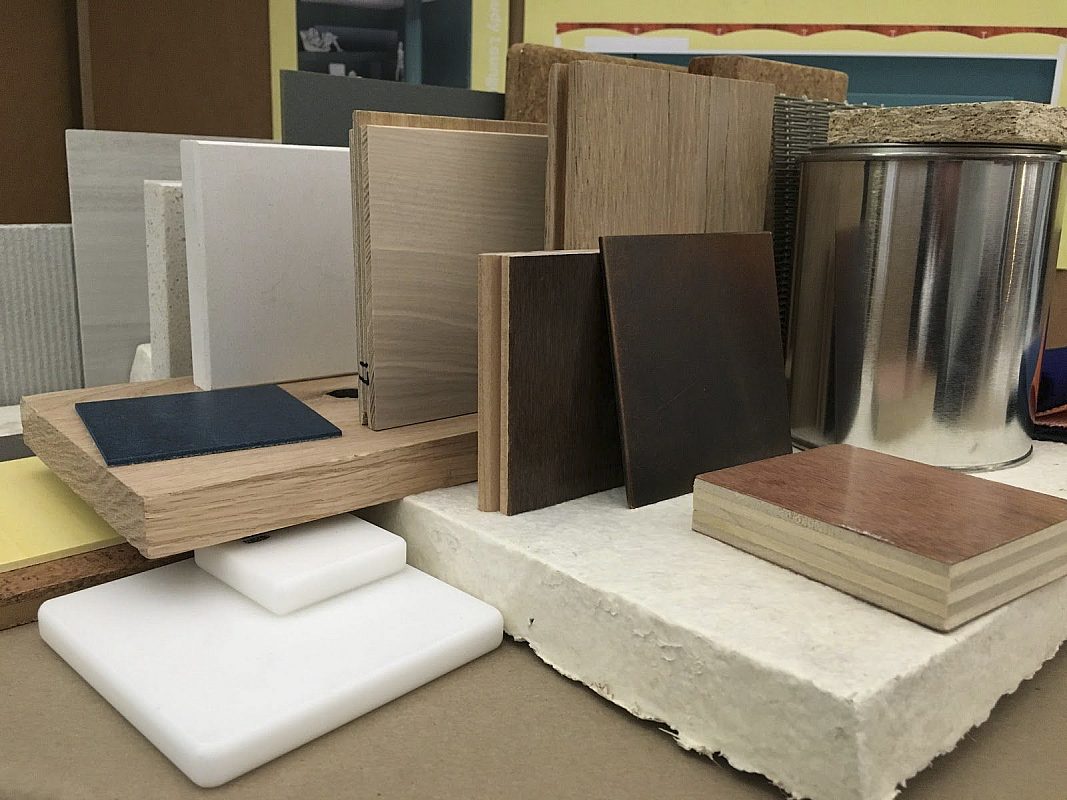How can a public toilet celebrate cultural diversity?
How would our thinking change if we didn’t rely on sight?
Can simple surface changes transform how people feel?
These are just a few of the questions that Parson’s MFA Interior Design graduate students explored this past semester in their Spring 2017 theses in Professor Jonsara Ruth’s Thesis Lab titled “Materials & Health in Context”. The context was East Harlem, and the students tackled a wide-range of issues with clear passion and drive: everything from affordable housing to the possible links between habit and habitat. Not only did students investigate and propose solutions to important, topical issues—like how design itself can often be affected by and perpetuate economic and social inequalities—but they did so across disciplines, demonstrating that designs are never created in a void.
Likewise incredible was how the students investigated subjects and places that are usually shied away from. One such graduate, Harnoor Manchanda, centered her thesis around something people are likely to avoid, both literally and mentally: the public toilet.






“East Harlem has such a diverse population, so many diverse people live there, that they can have rifts when they come together because of these differences...but a toilet is a place that every single person needs. So I tried to use it as a space that would acknowledge all these differences and emphasize their similarities, not through face-to-face conversation, but by creating silent interaction.”
Divided into four separate stalls, each with its own private entrance, Manchanda’s prototype of a public restroom is structured so that the presence of other people in the space is acknowledged while retaining individual privacy, stressing the invisible bonds that connect even the most disparate people. The toilet experience can be adjusted: from the height of the floor beneath the toilet seat, to the angle of the seat itself. The next person will experience the toilet adjustment of the previous.
An exercise in compassion, Manchanda’s project also explored the link between health and color. Each of the stalls are painted a different color, to represent whatever emotion a patron strives to feel; even these are personalized—each shade (blue, green, red, or yellow) might be interpreted differently by any given person, allowing for a range of emotion with a few simple hues.
“The idea is that the person can choose their own experience,” Manchanda explained.
All in all, Manchanda was incredibly insightful and thorough in creating what would be a revolutionary kind of public restroom—one that people would actually want to use.
MFA student Mercedes Plessmann’s project was similarly rooted in empathy. In her thesis titled “Building Healthy Kids,” which focused on East Harlem’s schools, she posed the question, “Does the lack of civic awareness of material health perpetuate inequality?” The answer was an unfortunate but resounding yes.
“Schools are a really interesting place to study interior design and materials because they and the materials used to build them are well-documented. I went in and analyzed the selection of materials from the 1900s, the 1980s, and 2016 to see what was going on.”

“There’s a clear use of petro-chemical byproducts that has been growing parallel to the asthma rates that are rising in East Harlem. With all the other health and social issues impacting East Harlem—including tobacco consumption and obesity—bettering the environment and its air quality is just one way to help mitigate the situation...maybe help reduce the issues.”
Along with investigating the material history of schools in East Harlem, she also extensively researched different levels of material use. In her design of an educational facility, Plessmann used exclusively healthier materials, building with human health in mind. In an effort to combat the low civic awareness she discovered in her research, Plessman used methods of encouraging others to examine the materials around them.
“There was a lot of research involved, but the real difficulty was that there’s a great deal of information that needs to be studied, but there isn’t a lot of information out there. On top of that, there needs to be an increase in awareness…an instinct to question what’s around you, a sense of awareness that encourages you to ask what something is instead of assuming that it’s safe.”
She incorporated this drive in her project, calling it “designing in section.” Spaces and were designed to expose themselves and the materials within them. For example, she constructed large, aesthetically-pleasing cut-outs in her walls, exposing what was inside them in the hopes of encouraging people to ask questions. To wonder about the makeup of their surrounding walls. To force us to take another look at things we otherwise take for granted.
These are just two examples of a wide array of influential, innovative, and socially sensitive projects. From student Sam Bennett’s exploration of why we keep the things that we do, to student Sarah Burns’ re-imagining of interior design and what makes a home a home, students demonstrated that design transcends the physical space.









The materials that surround us are more and mean more than what meets the eye. As these theses demonstrated, materials manifest and communicate ideas. They create experience.
This is the kind of understanding that we need in our future designers. This is what will close the gap so that we may take steps towards reducing inequality and giving everyone better, healthier lives. Then and only then will materials no longer threaten the quality of life, but enhance it.
Read More
Join Our Academic Network
Get Access to our carefully researched and curated academic resources, including model syllabi and webinars. An email from an academic institution or a .edu email address is required. If your academic institution does not use .edu email addresses but you would like to join the network, please contact healthymaterialslab@newschool.edu.
Already have an account? Log in